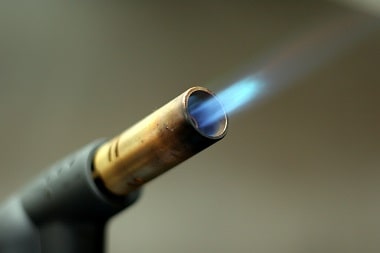The bubbles arise because of the reaction between the polyol and isocyanate. The result of this reaction is a viscous liquid that becomes solid as it cools. Woodworkers use this material to protect the wood from scrapes, cracks, water, and humidity.
The bubbles appear because the reactants are flammable, and the mixture is exothermic. So, how do you get out of this situation? Can you use a torch to get bubbles out of polyurethane? Read on to know more regarding this question.
Bernzomatic TS8000 – High Intensity Trigger Start Torch, Black
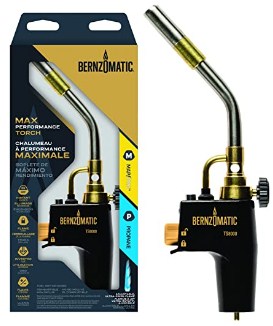
The Bernzomatic High-Intensity Trigger-Start Torch features a high-intensity precision flame for maximum heat output. The torch is designed for a variety of household projects, including big diameter soldering, welding, brazing, and heat application. Not only that, the ultra-swirl flame provides a hotter flame than a standard pencil tip flame for maximum heat output.
How to Fix Bubbles in Polycrylic
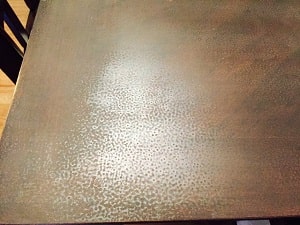
Bubbles in Polycrylic usually come from the varnish itself, so when you are trying to fix bubbles in polycrylic, the first thing you want to do is make sure your varnish is still good. One of the biggest reasons this problem happens is that your varnish has gone bad.
Once you have confirmed that your varnish is still good, you are going to want to make sure that you are applying it correctly.
The most common reason why people get bubbles in their polycrylic is that they are applying it too thickly or too quickly.
You want to apply several thinner coats instead of one thick coat. The thicker coats will cause air bubbles which will dry and turn into small bumps.
However, to get rid of the problem, you can do a few things:
- Thin the Polycrylic to help it flow better. This is the easiest thing to do and will often fix the problem.
- Apply enough coats to block out the bubbles. Since they’re trapped in the film, they can’t continue to grow and will eventually disappear. If you can see them, though, it’s likely that there are others that are too small to see that may cause problems later on.
- Use an additive like Penetrol or Floetrol. These add flow but also increase wetting because they reduce surface tension. They can be very helpful in situations like this and are worth trying if thinning alone isn’t enough.
- Roll the finish on rather than brushing it on. This is one of several reasons I love to use a foam roller with water-based finishes (Polycrylic, water-based polyurethane, etc.).Can you put polyurethane over Polycrylic?
Why Are There Bubbles In My Varnish?
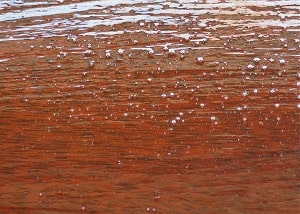
If you have bubbles in your varnish, it is caused by the presence of air pockets. This can happen if you shake or stir the varnish too much, which will introduce air into the product.
Air bubbles can also form when you apply the varnish too thickly. If too many coats are applied, they will not dry properly and may look cloudy rather than clear. Equally, if you apply a too thin coat, it may not dry properly and also look clouded.
You need to allow at least two hours between coats for the first three coats and then 24 hours for subsequent coats.
If you have bubbles in your varnish after it has dried, do not try to remove them with a brush, as this will make them worse. Instead, lightly sand the surface with fine-grit sandpaper and then apply another coat of varnish over the top.
Ensure that you do not stir or shake the varnish bottle before use.
How to Get Bumps Out of Polyurethane Finish
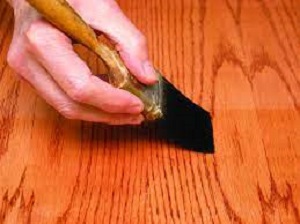
The bubbles you see on the surface of your polyurethane finish are caused by a chemical reaction between the polyurethane and the oils in the wood. Oils can come from the wood itself — especially if it’s oily woods like jatoba, padauk, cocobolo, and rosewood.
Oils in the wood can come from solvents that remain after cleaning the surface (which is why you should wipe with clean water, not mineral spirits).
Almost all polyurethanes, even slow-drying polys, will bubble if applied to these oily woods. And if you try to sand out the bubbles, more oil comes to the surface and causes more bubbles. It’s a vicious cycle.
This problem most commonly occurs when applying the second coat of polyurethane over an already finished surface.
That first coat has already dried and hardened, creating a barrier between the oil in freshly cut end grain and your new finish. But without that barrier, even a few minutes after cutting off a board’s end grain, bubbles will form in your new finish.
The cure is simple: If you want to prevent bubbles from appearing in your polyurethane finish, make sure the room is well-ventilated, and the temperature and humidity are at proper levels.
You should also clean the wood before applying polyurethane and apply thin coats of polyurethane evenly across the surface.
How to Get Bubbles Out of Clear Coat
The best way to avoid bubbles in your clear coat is by spraying quality paint. If you apply the paint too thick, then you will get bubbles. You can use a reducer designed for “hot” conditions, or if you have access to a spray booth, you can use a slower reducer.
The most common precaution to take is to always make sure you shake the can for 1 minute before using it. If it isn’t shaken enough, air bubbles can form in the paint. This can cause a rough surface which will be visible once the paint dries.
If the paint was applied in direct sunlight or at high temperatures, this might have caused it to dry too quickly, trap air bubbles inside as well as cause runs in the paint or other imperfections.
If this is why your paint has bubbles in it, unfortunately, there is nothing you can do to fix them.
In this case, you have to follow the following methods-
You will need to sand down the clear coat and reapply it when temperatures are cooler. Before you apply a second coat of paint, wait until the first one is dry to the touch. Then sand it with fine-grit sandpaper, wipe it down with a tack cloth, and apply your clear coat.
Clear coats should always be applied with a touch-up gun. If you use an aerosol spray can, the paint may not come out evenly.
Heat Gun For Polyurethane
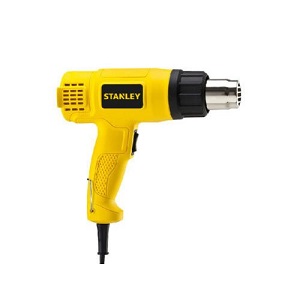
One of the best ways to get bubbles out of water-based polyurethane is to use a heat gun. The heat breaks down the bubbles in the polyurethane, leaving a smooth finish.
Heat guns are also used to remove paint. A person can use a paint stripper to remove several layers of paint, but it may take days. If a person uses a heat gun, they can strip paint in just a few hours.
If you can’t get your hands on a heat gun, you could also use a hairdryer. To remove bubbles in this manner, make sure that the wood surface is completely covered with the finish. Once it’s completely covered, go over the entire area with the heat gun.
You may need to stand on a chair or ladder to reach all areas when using the heat gun. Make sure you keep moving it around so that the wood doesn’t burn. Use short bursts of breath from the heat gun and allow room for air between passes. Keep doing this until all bubbles have disappeared.
How to Remove Bubbles From Lacquer

Lacquer is an extremely durable finish that can be applied over wood, plastic, and metal. It’s perfect for woodworking items such as tables and chairs, but it also works well on items such as guitars or even cars.
When applying lacquer, it’s important to have a smooth surface. If air bubbles get trapped under the lacquer when it’s applied, they will be visible once the lacquer dries. Fortunately, those bubbles can be removed.
Heat the lacquer with a heat gun until it softens. A heat gun resembles a hairdryer but is more powerful and is available at local hardware stores for about $30 to $50.
Apply more lacquer to the bubble and use your hand to smooth over the area. The bubble should disappear within minutes of application; continue smoothing until you’re certain it has vanished completely.
How to Fix Polyurethane Mistakes
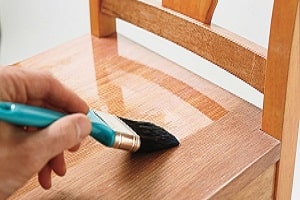
It is very common to make mistakes while doing an application with polyurethane. Here is how you can counter the mistakes-
Bubbles in Polyurethane Finish
If you have bubbles in your polyurethane finish, there are a few things that can cause it: bubbles on the surface of the wood that was not sanded out before applying the finish, air bubbles trapped during the application, or solvent popping (when a solvent evaporates faster than the surrounding area and causes tiny bubbles).
To fix bubbles in your finish, you will need to lightly sand down your piece and start over. If you still have an issue with bubbling, try brushing on your polyurethane instead of spraying.
If you have bubbles pop up after your piece has dried, they may be solvent popping. You can try using very fine grit sandpaper, sanding down those small bubbles, and then wiping away any dust with a lint-free cloth.
Runs in Polyurethane Finish
If runs or drips appear in your polyurethane coating, don’t panic. They might not be as noticeable as you think once the finish dries.
If they are still visible after drying, sand them down carefully with 220-grit sandpaper until they are level with the rest of the finish. Then apply a new coat of polyurethane evenly over the surface, and you are done.
If you happen to drip some polyurethane on your floor or the deck or if you get it on your hands or clothing, here’s how to proceed:
Floor: You may be able to wipe up minor drips with a damp paper towel or rag. If that doesn’t do the job, use mineral spirits.
Hands: Use mineral spirits and lots of soap and water to clean off your hands as soon as possible.
Clothing: Remove the article of clothing immediately and wash it with soap and water (if it’s not white). Let it dry before applying a dab of paint thinner such as turpentine or mineral spirits on the stain. If this doesn’t work right away, repeat the process until the stain disappears (don’t wash the garment again until all the stain is gone).
Can You Heat Polyurethane?
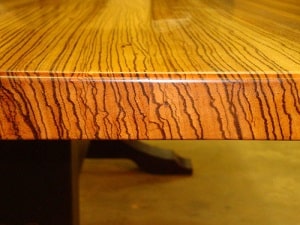
Polyurethane is a type of plastic used in a foam and other materials. It can be heated using the same methods as other plastic items, but it is important to remember that not all plastics are the same. Some melt under high heat, while others burn or ignite.
Polyurethane is one of the most durable types of plastic, making it a popular choice for use in a variety of products. Because it is so strong, heating polyurethane requires more energy than other types of plastic.
However, once heated, it can be molded into almost any shape. Common uses for heated polyurethane include furniture padding and construction materials.
There are several different ways to heat polyurethane, including the use of hot water and steam, electrical sources such as hot plates and ovens, and even open flames such as blowtorches. The method used depends on what type of shape you wish to mold the material into.
For example, to mold a large area of insulation, you will want to use steam heaters or electric ovens because these do not apply heat directly to an area but rather heat the air around your material. Can you put oil based polyurethane over water based polyurethane?
Frequently Asking Question
1. Why Use a Torch to Get Rid of Bubbles On Epoxy Resin?
This method works very well to get rid of bubbles in epoxy resin. Use a blowtorch, a heat gun, or a hot plate. The heat causes small bubbles to rise to the surface and burst. The smaller the bubbles, the less noticeable they will be in your finished product.
Be careful not to overheat the resin. Epoxy resin has a high flash point at approximately 300°F (150°C). Never use an open flame near your resin. It could ignite.
2. Do I Really Have to Use a Torch for Surface Bubbles?
Just as you are finishing pouring your resin into your mold, gently pick up the mold and wave it around in the air above your pouring area (not too close!) to help pop any bubbles that may be on the surface. You can also gently blow across the surface to pop them or use a hairdryer or heat gun set on low to pop the bubbles.
3. How Do You Get Rid of Air Bubbles In Polyurethane?
There are a few ways to get rid of the bubbles. You can use a brush and brush out the bubbles as you apply the finish, or you can apply the first coat with a foam roller. You can also try applying the finish with a vacuum chamber.
4. How to Apply Polyurethane Properly?
To apply polyurethane, you will want to move in the same direction as the grain of your wood. This helps reduce lap marks as well as brush strokes. After each coat dries, rub it down with steel wool to rub out any imperfections and raise the grain. Then lightly sand it with 220-grit sandpaper to smooth it out again before applying the next coat.
5. How Do You Fix Bubbles In Polyurethane?
You can use a needle and syringe for popping bubbles. Clean up the area with acetone or nail polish remover, then wait for it to dry. Once dry, apply another coat of polyurethane.
To fix bubbles caused by a dirty surface, clean and prepare your surface according to our instructions and then sand the surface back down to bare wood with fine-grit paper. Then seal with sanding sealer or a shellac primer and topcoat with polyurethane.
6. Can I Use Heat On Polyurethane?
Polyurethane’s active ingredient is quite sensitive to heat, and even though it dries within one minute, it takes up to seven days for full cure. You can speed up drying time using a hairdryer (on low heat), fan, or both.
7. Can You Buff Out Polyurethane Bubbles?
If there are bubbles in your polyurethane finish, they might be able to be buffed out. However, it is not a process that is likely to work on deeper bubbles. When your floor has dried, the bubbles are visible as a pit or crater on the surface of the coating. The best way to remedy this situation is to remove the coating and start over.
8. Can You Use a Blowtorch to Get Bubbles Out of Resin?
This is not a good idea. While it will make some bubbles pop, the heat from a blowtorch can also cause other problems. It makes it hard for the resin to bond to your surface and can melt plastic, foam, fabrics, and other materials you might be using epoxy on.
Conclusion
To get rid of fat bubbles in water-based polyurethane layers, you should use a torch. A handheld propane torch is the best. You can get one from your local hardware store. However, you must know the shelf life of your water-based polyurethane. So, can you use a torch to get bubbles out of polyurethane? At this point, you should know the answer of the question. If you have any more questions regarding this topic, feel free to leave them in the comment section.

